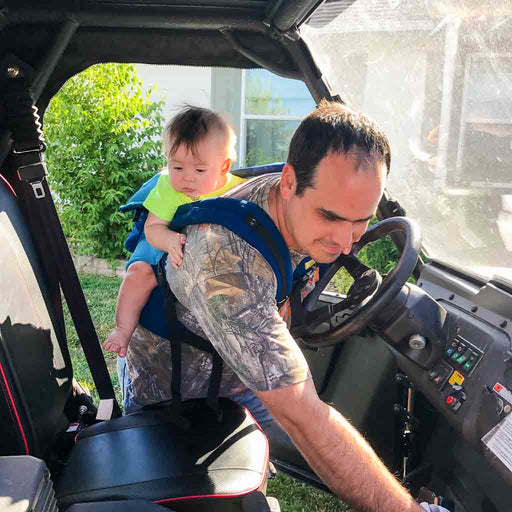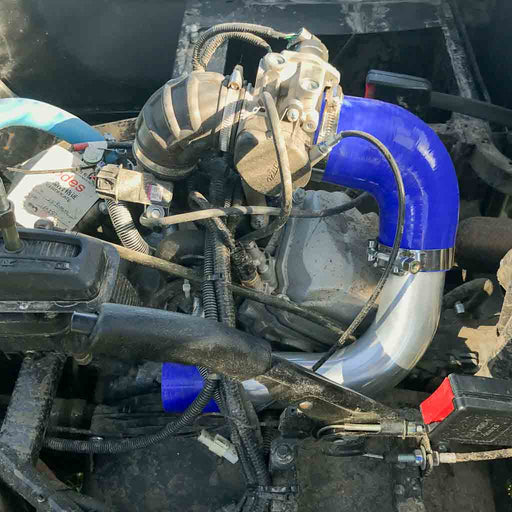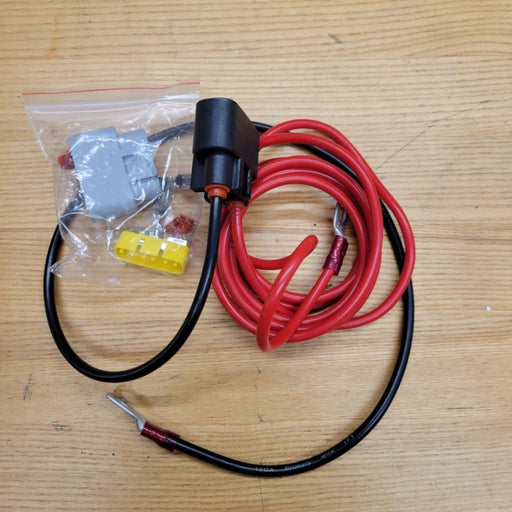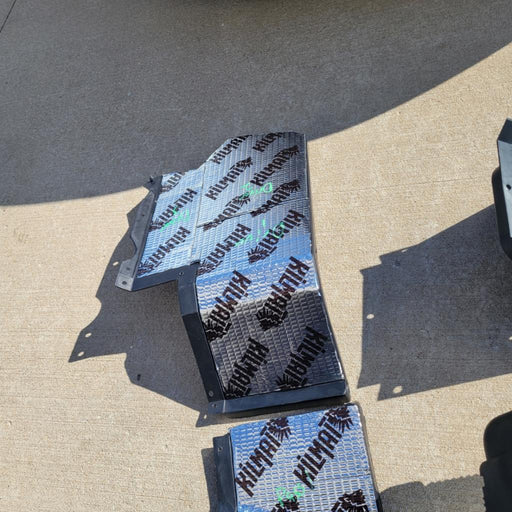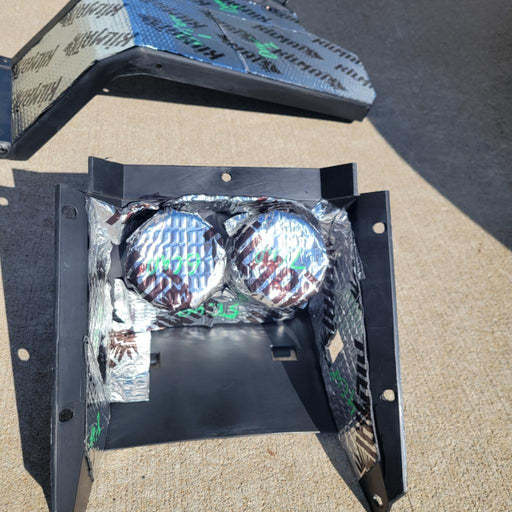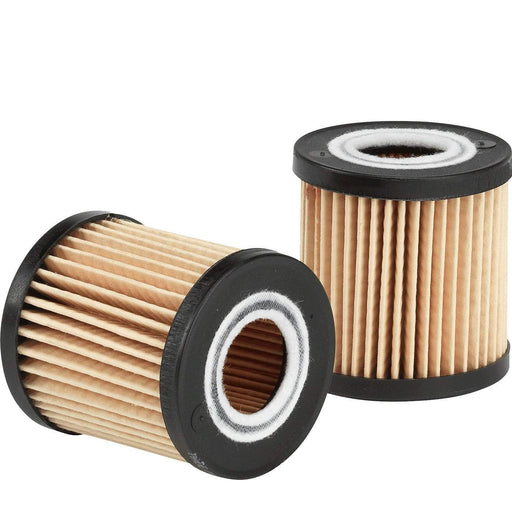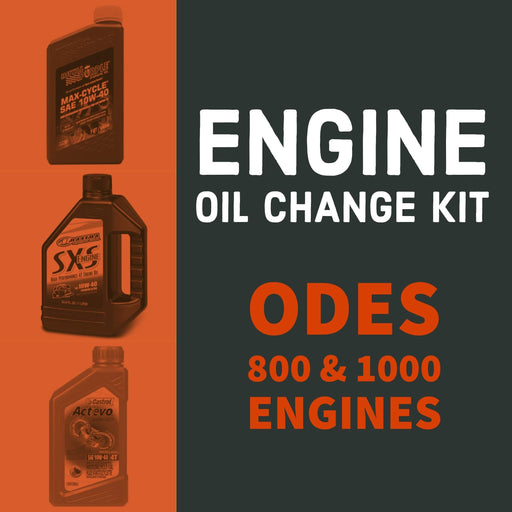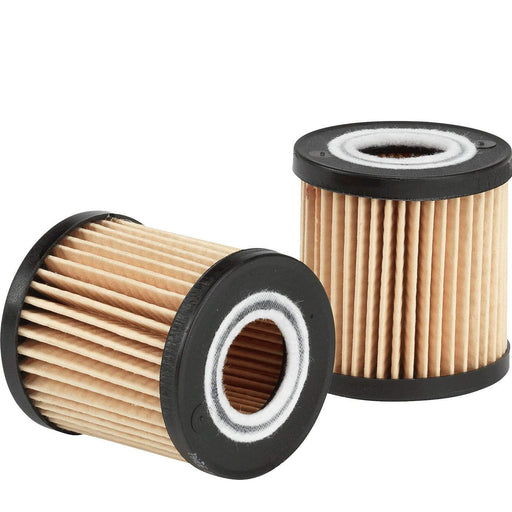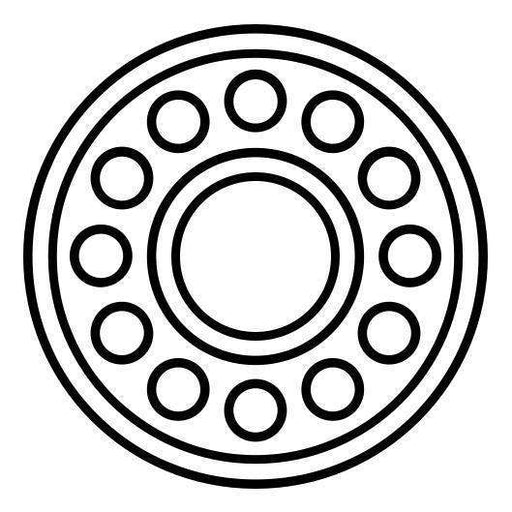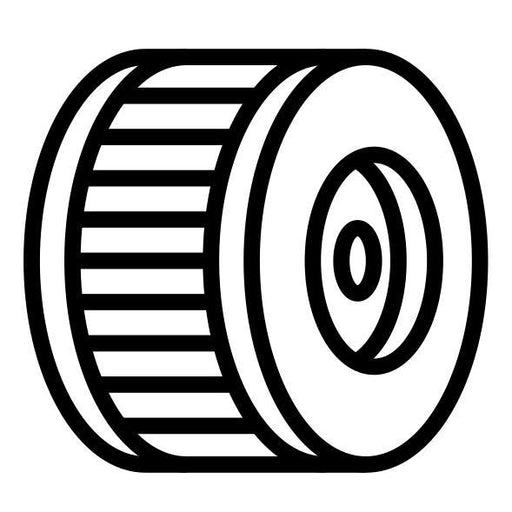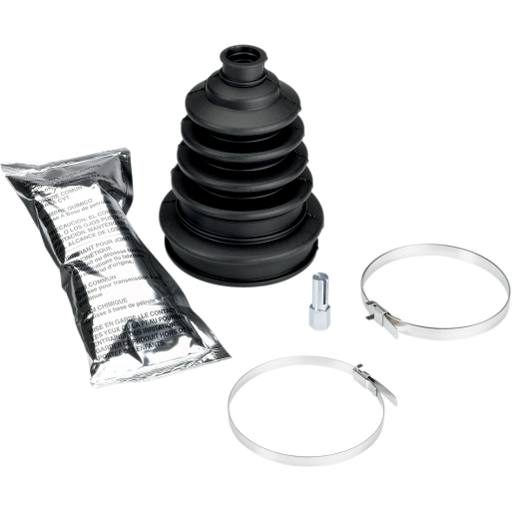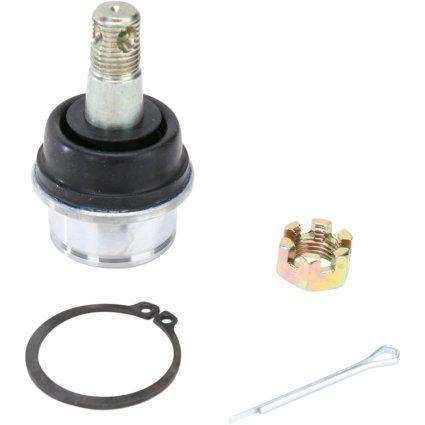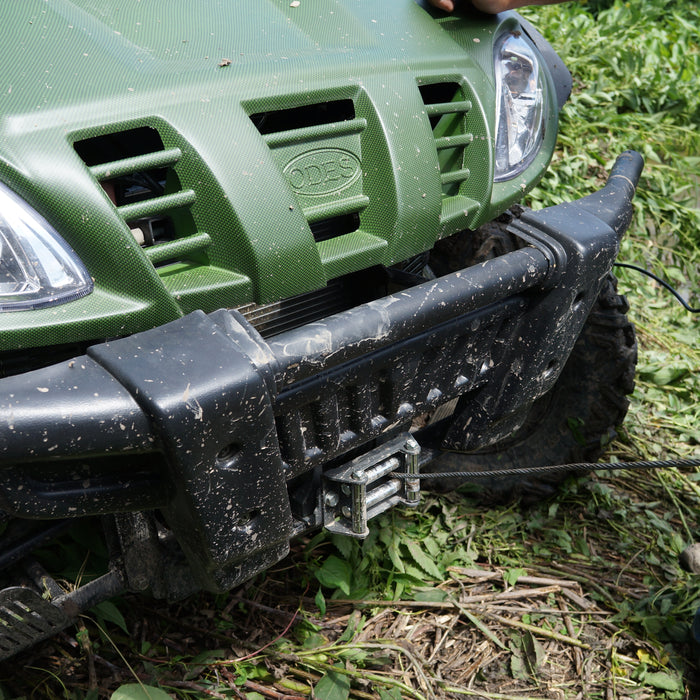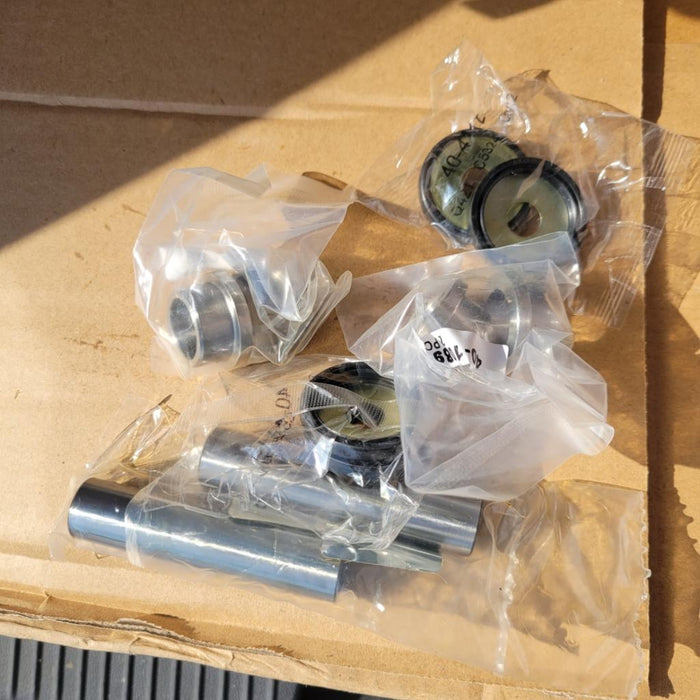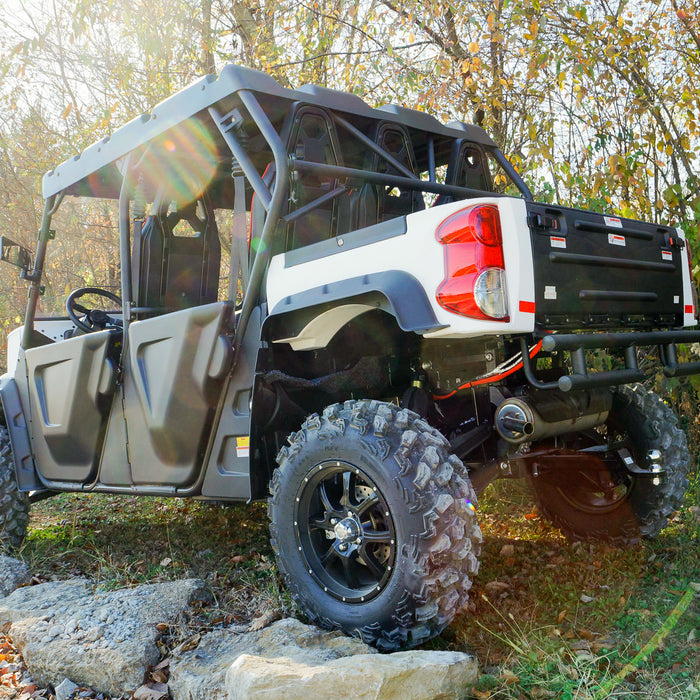
An Oil Change and a Sunset
With our summer schedule in full swing, it’s been hectic around our house and we’re trying to find new ways to run as efficiently as possible. Since Beth has written the last three posts in a row and since we spent last weekend at one our favorite ATV parks (read about that here), I thought I’d hit two birds with one stone. So this week’s post is all about giving my wife a break from writing and taking care of a pretty basic but important maintenance task --- oil changes.
If changing the oil in your ATV seems like a pretty simple task, it’s because it is. But around here we’re learning that there are no simple tasks. Literally every project we’ve tackled in the last few months has started off as something we thought we could knock out quick and easy. Don’t believe us? Check out our post here and read about how we learned about welding aluminum. Let’s just say there’s a reason they say the devil is in the details.
When it comes to oil changes, the process itself is pretty straightforward. But when you start to consider the different styles, makes, and models of ATVs, things can get kind of fuzzy. For example, my KFX 400 has a separate oil reservoir while Beth’s Warrior 350 does not. Not only are our filters different but the bikes take different oil types and have different methods of disassembling and reassembling as well. You can read more about our different bikes in our post here. Especially in families with more than one rider (or more than one ATV) it can really help to understand the process for each bike individually. If you know all of ins and outs of each bike, you can save yourself some time by setting up an assembly line like we did. Note the photo below: it also really helps that we changed the oil after we rode and washed our bikes, but before we removed them from the trailer.

Of course you are also going to need something to drain the oil into and use to transport it to your local place for disposal. I know that most O’Reilly Auto Parts will take the used oil. If you do not have one of them close just try your local auto parts stores or the dealer. The last thing you need to prep is your tools. You will need a basic set of wrenches, allen wrenches, and a socket set to do most general maintenance to an ATV. 99% of the time the ATV’s are metric so make sure that you are using all metric tools. You also may or may not need a funnel to poor the oil back in. If you do not have a funnel I will show you how to make a “poor man’s” disposable funnel using a water bottle. So for the recap you need the oil, oil filter (if non reusable), oil pan, and tools. I know this sounds like a lot of items but you will save money by doing this yourself. Finally, time to change the oil. We thought this would be a great topic to write about because it really helps to drive home the point that each make and model is different and that sometimes even something as simple as an oil change can take a little longer if you’re used to a different ATV. For example, my KFX has a separate oil reservoir while Beth’s Warrior does not. 
We’ll start with our KFX. If you know that the model of bike you have has a separate oil reservoir, this should be a similar process (although it’s probably not the exact same). If you have any doubt, make sure to check your owner’s manual. If your ATV has an oil reservoir, you will need to drain from both the engine and the reservoir.

You should be able to see a drain plug on the bottom of both the engine and the reservoir. Confession: We cheated. The picture below is of Beth's Warrior, there is no oil reservoir. The plug on my bike was hidden under the Pro Armor.

When you are removing the plugs, be sure to use the correct size socket or wrench. Otherwise, you risk rounding the edges of the plug. When you have the plug removed, watch to make sure you are not missing any small parts. This washer could easily be dropped in the used oil pan and missed on reassembly.

With most ATVs, the tip of the drain plug is a magnet. Look closely to see if there is any metal. Don’t just look with your eyes either; make sure you are using your hands. Sometimes if you wipe your fingers across the drain plug you can find bits of metal that you wouldn’t have been able to see right off the bat.

If you do find some fine partials or shavings don’t panic. Go ahead and finish the oil change, ride a couple of hours, and change the oil again. If you find more shavings, then you need to see a dealer or repair shop about it. If you run into big chunks of metal from the beginning, then you need to go to the dealer or shop with it. While the oil is draining, I go ahead and change the oil filter. Normally if it is a cartridge type, the filter will be in a housing on the side of the engine and held by three small bolts.

Make sure that when you are removing the old filter you are checking for metallic shavings just like you would check the drain plug. It’s important to look out for metal in your oil, as it could be an indication of engine break down.

Most sport ATVs use a cartridge type oil filter but there are a few sport ATVs that have a spin on oil filter like most cars have. Again, this is going to depend on your make and model. Make sure that you watch how the filter comes out. Most will have a spring that keeps the filter tight. You’ll need to know how the spring and filter fit together so that they can be placed back in the same order.

Since the filter for my KFX comes with a new O-ring, I replace it every time.

See the little triangle on the filter cover? It goes up. Make sure that you pay attention to the little things like that when you take it apart so when you go back together. It’s the little details that can cost you time if you aren’t paying attention.

If you remember above, I mentioned that we used an assembly line method so before we added the oil back to my KFX, we drained the oil in Beth’s Warrior, which does not have a separate oil reservoir. Simple right? One drain plug, one oil filter? Nope. Yamaha has a spring and oil pump strainer on the top of the drain plug. So if you see a drain plug that larger than usual, be ready for some stuff to come out with it. So slowly take out the drain plug…

And FYI, this it what happens when you do not go slow…
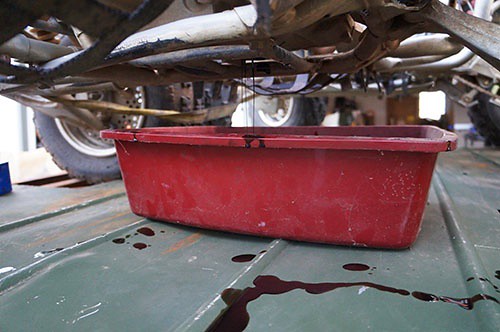
If you remove the plug too quickly, that’s all you’ll get.

Then you get to dig in your oil pan to find the rest of the stuff. Never mind the socket still attached to the drain plug.

It was a real surprise when I found out the filter was reusable. Reusable filters are awesome. You just clean it out and put it back in. I use a spray carb cleaner for this because it will remove the oil, has a little pressure to knock thing out of the screens, and it evaporates quickly.

Once you’ve got the oil drained and the filter cleaned, you’re good to start reassembling. I was having some major issues getting this to all line up and screw back in. Spoiler alert: I had to remove the engine guard before putting the drain plug back into place. Once we had everything drained and reassembled, it was finally time to add the new oil. Adding oil to my KFX can get a little awkward. I have tried about ten different funnels and some work better than others but a homemade one seems to work the best. What I like to do is cut the ends off a bottle or a cup.


This has worked better than any funnel I have found. It’s still a little difficult to get to but you can’t beat the price. We finally finished up as the sun was going down. Not bad for a weeknight. Besides, an oil change and a sunset? Doesn’t that just scream romance?
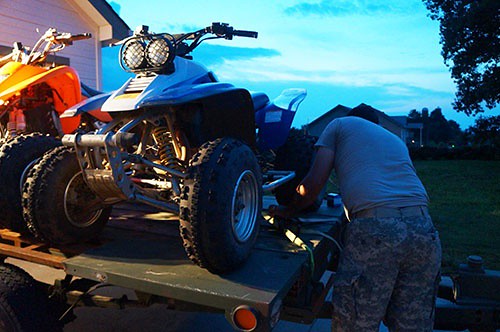
Changing the oil is one of the most important things you can do to extend the life of your ATV. And even though we’ve written over 2000 words on the topic, it really is simple. The key is to go slow and pay close attention. Not every bike is the same and by acknowledging that up front and paying attention to the details, you’ll save time in the long run. Of course don’t forget you’ve got some pretty valuable resources out there. We showed you how to change the oil in our bikes, but your owner’s manual is the ultimate how to guide for your ATV. If you have any model specific questions not covered in your owner’s manual, dealerships are a wealth of information. And of course, if you’ve got any general questions you can always email us here and we’ll do the best we can to help.
As always, tell us your thoughts. What have you done lately that started out simple but took hours? Do you have a preferred oil type? And when do you find time for ATV maintenance? Ours always seems to be just as the sun is setting…
-
Original price $ 159.99 - Original price $ 204.99Original price$ 159.99 - $ 204.99$ 159.99 - $ 204.99Current price $ 159.99
Air Filter Relocation Kit for ODES UTVS
Scooter's PowersportsIn stockOur very own Air Filter Relocation kit for ODES UTVS. Designed and manufactured by Scooter's Powersports. Unlike some ODES Air Filter Relocation K...
View full detailsOriginal price $ 159.99 - Original price $ 204.99Original price$ 159.99 - $ 204.99$ 159.99 - $ 204.99Current price $ 159.99 -
Original price $ 40.00 - Original price $ 40.00Original price$ 40.00$ 40.00 - $ 40.00Current price $ 40.00
Voltage Regulator Relocation Kit for ODES UTVS
Scooter's PowersportsDesigned to move the voltage regulator from under the hood to under the seat. Requested by you and built by Scooter's Powersports. Allows for elimi...
View full detailsOriginal price $ 40.00 - Original price $ 40.00Original price$ 40.00$ 40.00 - $ 40.00Current price $ 40.00 -
Original price $ 129.99 - Original price $ 159.99Original price$ 129.99 - $ 159.99$ 129.99 - $ 159.99Current price $ 129.99
Pre-Cut Sound Proof Matting for ODES UTVS
Scooter's PowersportsIf the noise inside the cab of your ODES UTV has ever bothered you, this. is your solution. Now you can get one of our best selling shop services a...
View full detailsOriginal price $ 129.99 - Original price $ 159.99Original price$ 129.99 - $ 159.99$ 129.99 - $ 159.99Current price $ 129.99 -
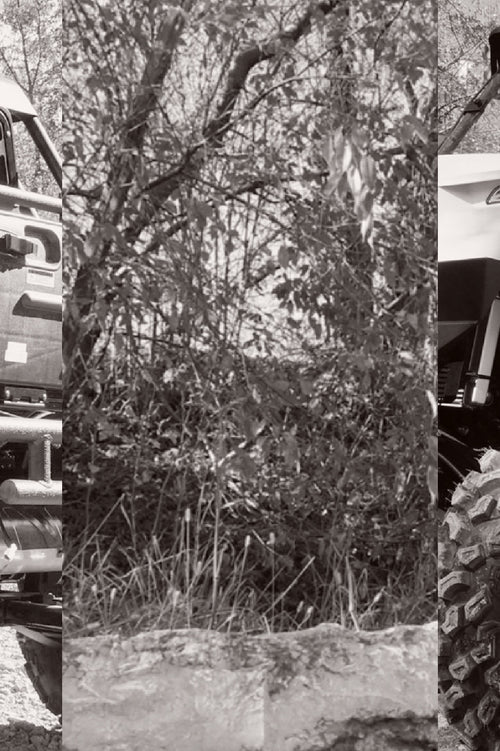 View all ODES UTV Performance mods
View all ODES UTV Performance mods
-
 ODES UTVS best sellers
ODES UTVS best sellers -
Original price $ 38.49 - Original price $ 55.99Original price$ 38.49 - $ 55.99$ 38.49 - $ 55.99Current price $ 38.49
ODES Oil Change Kit for 800 and 1000 Engines
Scooter's PowersportsODES Industries recommends an engine oil change at 25-hours of run time or 1000 miles. (We won’t tell if you turn that down to once every 50-hours ...
View full detailsOriginal price $ 38.49 - Original price $ 55.99Original price$ 38.49 - $ 55.99$ 38.49 - $ 55.99Current price $ 38.49 -
Original price $ 7.99 - Original price $ 7.99Original price$ 7.99$ 7.99 - $ 7.99Current price $ 7.99
ODES Oil Filter - High-Performance
Not specifiedHigh-performance aftermarket ODES oil filter. Compatible with 800cc and 1000cc ODES engines. Be sure to select your make and model before adding to...
View full detailsOriginal price $ 7.99 - Original price $ 7.99Original price$ 7.99$ 7.99 - $ 7.99Current price $ 7.99 -
Original price $ 49.99 - Original price $ 62.00Original price$ 49.99 - $ 62.00$ 49.99 - $ 62.00Current price $ 49.99
Pivot Works Wheel Bearing Kit for ODES - Lifetime Replacement!
Pivot WorksIn stockPivot Works wheel bearing kit for 2012+ 800cc and 1000cc UTVs from ODES Industries. Fitment includes the Short Travel (Standard) suspension and the...
View full detailsOriginal price $ 49.99 - Original price $ 62.00Original price$ 49.99 - $ 62.00$ 49.99 - $ 62.00Current price $ 49.99 -
Original price $ 159.99 - Original price $ 204.99Original price$ 159.99 - $ 204.99$ 159.99 - $ 204.99Current price $ 159.99
Air Filter Relocation Kit for ODES UTVS
Scooter's PowersportsIn stockOur very own Air Filter Relocation kit for ODES UTVS. Designed and manufactured by Scooter's Powersports. Unlike some ODES Air Filter Relocation K...
View full detailsOriginal price $ 159.99 - Original price $ 204.99Original price$ 159.99 - $ 204.99$ 159.99 - $ 204.99Current price $ 159.99 -
Original price $ 40.99Original price $ 40.99 - Original price $ 40.99Original price $ 40.99Current price $ 36.95$ 36.95 - $ 36.95Current price $ 36.95
ODES 800cc Air Filter | 21040401001
ODES IndustriesOut of stockOEM air filter for ODES 800cc engines. Vehicle Fitment This part is compatible with the following vehicles 2012+ ODES Dominator 800 2015+ ODES Dom...
View full detailsOriginal price $ 40.99Original price $ 40.99 - Original price $ 40.99Original price $ 40.99Current price $ 36.95$ 36.95 - $ 36.95Current price $ 36.95Sold out -
Original price $ 18.99 - Original price $ 18.99Original price$ 18.99$ 18.99 - $ 18.99Current price $ 18.99
Fast Boot Kit
MooseIn stockExtremely heavy duty CV boot that fits virtually all ATVs and UTVs. Additional rib to allow boot to expand for larger joints Improved clamp retain...
View full detailsOriginal price $ 18.99 - Original price $ 18.99Original price$ 18.99$ 18.99 - $ 18.99Current price $ 18.99 -
Original price $ 29.99 - Original price $ 29.99Original price$ 29.99$ 29.99 - $ 29.99Current price $ 29.99
ODES Ball Joint Kit
Scooter's PowersportsODES ball joint kit for 800cc and 1000cc ODES UTVs. ODES Ball Joint Kit Includes (1) Ball joint (1) Circlip (1) Cotter pin (1) Nut Each kit provi...
View full detailsOriginal price $ 29.99 - Original price $ 29.99Original price$ 29.99$ 29.99 - $ 29.99Current price $ 29.99

